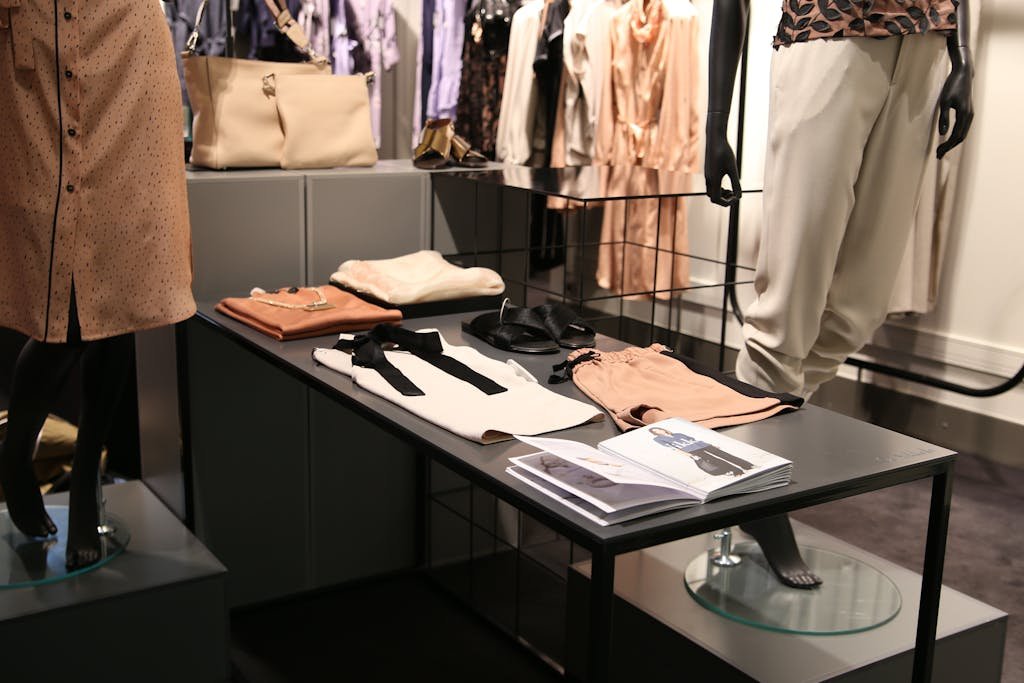Why Thrift Shopping Is Bad: A Best Guide
Thrifting, nowadays recognized for its positive environmental footprint as well as money-saving nature, is highly fashionable among people nowadays. Nevertheless, a more interesting and intricate picture is revealed when you look a little bit closer. Shopping from thrift outlets, indeed, has many advantages however, there are the downsides associated with it that deserve a second thought. In the article, we discuss the issue of why thrifting, though desirable, may still have unpleasant consequences.
What is Thrift Shopping?
Investing in thrift stores is exploring second-hand stores and charity shops to embrace great deals on all things; from clothes to furniture and more. It’s a kind of secret treasure quest, except you’re not digging for gold, but for amazingly awesome secondhand items that somehow just end up belonging to somebody again.
The great thing about buying at thrift shops is that you always find something that amazes you. One day you could be lucky enough to find yourself one vintage leather jacket straight from the ’70s, and the following day you might end up with a designer handbag that practically hasn’t been used for a fraction of the price. It can be an adrenaline rush, in addition to a feeling of satisfaction that comes with finding a good deal.
Reasons Why Thrift Shopping Is Bad
1. Overconsumption
Thrift stores are a type of paradise for shoppers, where they can find their favorite products at amazingly low prices. Nevertheless, opulence can result in overspending. It is really difficult to escape the broken purchase habit that completely relies on excitement rather than necessity. The fact that this kind of excessive consumption sustains the vicious cycle of textile waste makes thrift shoppers go against the ethical element that they usually associate with it.
2. Quality Concerns
One of the main disadvantages of second-hand clothes shopping is the inconsistency of the original quality of donated things. Although some of the gems will be successfully recovered, many contributions may be stained, ripped, or otherwise damaged. As a result of this confusion, shoppers may end up with less-than-ideal products or may have to return or replace them altogether, which is a waste of time and resources.
3. Limited Selection
The thrift stores are known for blending styles together carrying all sizes, for everyone’s needs. Furthermore, this variety could lead to discomfort when the shoppers go look for one particular type of product at a time. In particular, larger-size individuals can face difficulties in finding outfits that fit and highlight their bodies, since thrift stores may lack the required larger sizes of this type of clothes.
4. Fast Fashion Connection
Just like other things that are cheap and trendy, the clothes in thrift stores sometimes have their downsides. A lot of secondhand stuff remains of fads just like fast fashion that are associated with their temporary and cheap qualities. By simply doing their shopping at thrift stores, these buyers unknowingly stimulate the need for fast fashion, thus keeping the cycle where there continues to be exploitation and degradation of the environment.
5. Hidden Costs
In addition to the obvious savings on the initial price of clothing, buying vintage pieces may also add secret costs. Besides purchasing clothes that might need some additional cleaning or repairing before they can be worn, consumers will add more time and cost to the completion of the task. These hidden costs can weaken the sentiment of value for thrift shopping and lower its financial stability.
Navigating the Pitfalls
However, notwithstanding those drawbacks, shopping at a thrift store may still be a viable and sustainable alternative once it is treated with caution. By adopting a few key strategies, shoppers can mitigate the negative impact of thrift shopping:
- Shop with Purpose: Before you start doing thrift shopping, identify the exact items that you need or want. This strategy will reduce the chances of solely purchasing on a whim and prevent hyper-consumption.
- Inspect Carefully: Spend as many hours as you can scrutinizing each product before you decide to buy it. Scan for signs of wear, damage, or shoddy materials so that you do not receive the exact opposite of what you expected and the purchases meet your standards.
- Prioritize Quality Over Quantity: Opt for high-quality and timeless pieces that will get you through seasons and last a lifetime, rather than settle for fast fashion goods that are poorly made and will soon go to waste.
- Support Sustainable Brands: Try both thrift shopping and shopping from sustainable and ethical clothing brands. By supporting companies that prioritize environmental and social responsibility, you can contribute to positive change within the fashion industry.

Environmental Impact
Fast Fashion Cycle
The trend of thrift shopping in some way envelops the over-production of garments by the fast fashion industry, who make clothes at a blistering speed to reflect shifting trends. You might say that the main objective of second-hand shopping to some extent, is to distract from fast fashion and less to do with what is the main reason for overconsumption and waste. Thrifting can be sustainable in the context of extending clothing lifespans; however, the cycle of cheap disposable fashion it creates might yield, in fact, additional impairment of the environment done by the fashion industry.
Contribution to Waste and Pollution
However, second-hand clothing’s effects on the process of clothing production and disposal are still negative. A lot of donated clothes from the various donation centers eventually make their way to landfills because most of them cannot be sold due to wear and tear or other factors. Furthermore, the transportation and the processing of goods require resources and energy, thus exhausting carbon emissions and pollution in turn.
Social Implications
Reinforcing Stereotypes
Many thrift shoppers are caught in the stigma that their only motivation is the thrift and not worth of the charity, which is false. This stereotype might reinforce the class boundaries and hurt the people who shop at thrift stores. In some cases, this might happen because they have no other choice, not from their free will. The glamorization of thrift shopping as a trendy fashion option could make the issues of social injustice which might have made people turn to affordable things be overlooked.
Accessibility Concerns
On top of that address, available to thrift shops is not the same for all people. Not all rural and low-income regions have thrift stores nearby with easy-to-reach transport and for some people, this remains a barrier to avail of the second-hand market. This lack of affordability might in turn lead to the worsening of socioeconomic disparity and eventually lead to social exclusion.
Final Thoughts
Thrifting, even though it is praised for being eco-friendly and budget-friendly as well, suffers from some disadvantages. From overbuying to quality issues, thrift shopping has its own set of constraints that need you to be consistent and concise in decision-making. By having awareness and mindfulness while thrifting, consumers can hype its benefits while holding its negative impacts, thus making environmentally friendly choices that correspond with what they believe.





